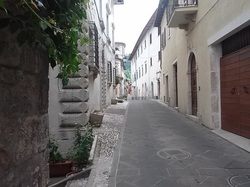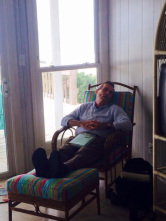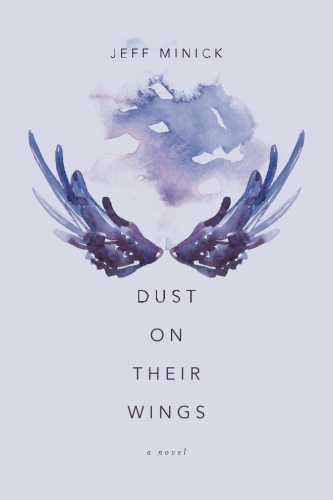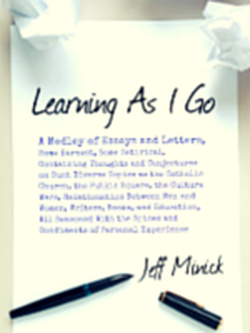
Some notes, written in haste and badly constructed:
The picture shows a street in Cascia during siesta.
On Wednesday, off to the gardens of the Villa Borghese, an enormous park of palaces, trees, gardens, and fountains. I walked here from my hotel, a trot of about an hour, and then rejoiced in the shady trees, the gorgeous blooms, the fountains, the relatively few people. Once a part of the Campus Martius, the field of Mars, an enormous area used for military training in Ancient Times, the gardens are now the most peaceful outdoor place I’ve found in Rome. I had come to tour the Galleria Borghese, but no tickets were available so I made my reservation for Saturday.
The picture shows a street in Cascia during siesta.
On Wednesday, off to the gardens of the Villa Borghese, an enormous park of palaces, trees, gardens, and fountains. I walked here from my hotel, a trot of about an hour, and then rejoiced in the shady trees, the gorgeous blooms, the fountains, the relatively few people. Once a part of the Campus Martius, the field of Mars, an enormous area used for military training in Ancient Times, the gardens are now the most peaceful outdoor place I’ve found in Rome. I had come to tour the Galleria Borghese, but no tickets were available so I made my reservation for Saturday.
The Villa Borghese was still worth the trip: good exercise, a chance to see this part of the city, a good day to be in the shade. (N.B. to Dr. Dorris: I am wearing sunscreen and a hat). In the park are ruins and statues, numerous meandering trails, lush vegetation. From some of the small fountains visitors fill their water bottles and splash their faces.
Here I find one touch of home as well, a short avenue lined with magnolias and with cicadas singing in the trees. For a brief moment, I feel a little heartache for my porch on Cumberland Avenue.
Thursday: I follow my usual routine of coffee and writing on the terrace, shower, breakfast, and out just before ten. I walked to Trajan’s Forum and visited the Basilica there as well as two other churches.
Then another hike led me to see Bernini’s Ecstasy of St. Teresa, but the church was closed until 3 p.m., so I will come back.
Along the way I witnessed a communist demonstration. It seemed poorly attended, with nearly as many policemen as demonstrators. I have mentioned the police before, but am daily surprised how many there are on the sidewalks and in the piazzas, along with soldiers.
Friday, July 3: I fell into a routine here more than a week ago. I wake early, write, get a coffee tray from Nina in the kitchen, write more on the terrace, shower, breakfast, and am out into the streets by 9:30. Generally, I come home by four, snag a bucket of ice from staff (for some reason the ice here has chopped up bits of plastic bags in it; I chew my refreshments very carefully). I then work, write, or read, and go out again in the early evening just to roam. Roaming means getting lost on every trip, but have my trusty map.
Today, however, was different. The time had come to get out of Rome for a day. Using the Christendom College Handbook for Rome, which my son Jeremy gave me and which has been an invaluable guide, I chose Cascia for my day trip. I wanted to see some real hills, view the Umbrian countryside, and have a worthy destination. Cascia, a town built like so many in this area on a hill, contains the body of St. Rita and a cathedral to honor her.
The hotel woke me with a call at five a.m. Though I’d less than four hours sleep—I had taken too long a nap the previous afternoon—I gamely rolled out of bed, shaved, showered, dressed, and departed. I walked to the Piazza Spagna, enjoying the empty streets, and took my first Roman subway ride. I only got lost once on the subway—I took the ancillary blue line—and again, following the CC Guidebook, I found the bus station and caught the bus with five minutes to spare. The three-hour trip was too bone-rattling for writing—the suspension on the bus surely needs repair—but the scenery as we entered the hills was lovely. We wound our way round all sorts of curves, so this is not a trip for you if you are prone to car sickness.
In some ways, this entire charming town honors this saint. Besides the usual ubiquitous gift shops, there are well-marked pathways up the steep hillside to the church. There is even an outdoor escalator to help the disabled and the elderly make the climb. The town is very clean, and though I am sure, judging by the number of shops and restaurants, that the streets on certain days swarm with pilgrims, today those same streets are only lightly travelled.
I attend Mass, once again in Italian, though I am learning to simply let myself hear without trying to hear. In the priest’s homily, I did catch the phrase that I translated “The heart is for Jesus.” I wasn’t sure whether he meant our hearts belonged to Our Lord or whether they should be for the Lord. Maybe both.
When I first went into the chapel containing St. Rita’s body under glass, pilgrims, mostly teenagers, packed the room, many of them kneeling in prayer. Later, on my return, the chapel was utterly empty. The solitude gave me the chance to pray for a while.
In the crypt of the church is the monstrance containing the Eucharistic miracle of Cascia.
And I finally saw some Italian children. In Rome, I see some small ones, but they are the offspring of tourists. Occasionally, a Roman mother will wheel a carriage with a baby past me, but that’s about it. Here children are in evidence, though there are still not many of them.
Umbria clearly has some connection to boars and pigs. All the eating establishments display a boar’s head or different statues of pigs. For lunch I had a Panini composed only of bread and ham, sliced for me by the owner hereself. The ham was spiced, and I rejoiced at finally eating a nice bit of meat after days of cheeses, pizza, and salad. Protein, yes!
One humorous sight today: I stepped into a religious gift shop, looking at various items. I moved in a circle about the room: the left wall was filled with different statues and medals honoring Saint Rita, the center wall with various rosaries, religious medals, and crucifixes, and the right wall—Barbie Dolls! The Catholic Church often mixes the sacred and profane, often beautifully, but this was just hilarious.
I am writing this note about Cascia on the terrace of Hotel dell Rose, drinking a glass of wine and marveling at the silence. The town is taking its siesta, and at this moment the only sounds are the chirping of birds, which is a blessed relief from the seagulls that plague my neighborhood, and some voices from an apartment just down the street.
Return to the hotel from Cascia: The driver of the bus arrived in a t-shirt and carrying his official blue shirt. After fiddling around for a few minutes, he put on the shirt—in his defense, the temperatures this afternoon bring on a sweat at the least exertion—and back to Rome we went. Along the way, I saw from the bus window fields of sunflowers, some of them enormous by Italian agrarian standards, and noted that even the other passengers commented on them. At one point, we passed an enormous waterfall, whose splashing sent into the air a cloud of mist at least a hundred feet high. As we neared Rome, a rain came on, bringing with it a perfect rainbow touching the earth at both ends.
On the platform of the Metro from Termini to Spagna, I didn’t make the first cut into the car. It was just too much of a mob. After a four-minute wait, a new mob, this time with me in front, pushed our way into the car. There was no need to hold onto a metal bar; like a Roman soldier squeezed in at Cannae by the surrounding Carthaginians, I couldn’t have fallen over if I’d tried. The coach smelled very much of humanity. Meanwhile, someone in English kept shouting, “Watch out for the pickpockets!”
Minutes later, the Piazza Spagna smelled very much of horse-flesh. The rain had wet the horses of the several carriages parked there, and their dampness and their exertions made that part of the square smell like a barn.
One word on Metros, tubes, and subways: it matters not whether you are in London, Rome, New York, or D.C., the faces on the underground transportation generally wear assume masks of indifference, weariness, death. I have seen saints in glass coffins with more expression on their faces. I’m not quite sure why this phenomenon occurs—the faces of my fellow travelers on the bus showed a lively range of emotions. Perhaps it comes from being so deep underground and entering into some sort of demise akin to death?
Note to self: lively eyes and a sort of half smile on the subway. Maybe one of these days I’ll break into a subway song just to see what happens.
Here I find one touch of home as well, a short avenue lined with magnolias and with cicadas singing in the trees. For a brief moment, I feel a little heartache for my porch on Cumberland Avenue.
Thursday: I follow my usual routine of coffee and writing on the terrace, shower, breakfast, and out just before ten. I walked to Trajan’s Forum and visited the Basilica there as well as two other churches.
Then another hike led me to see Bernini’s Ecstasy of St. Teresa, but the church was closed until 3 p.m., so I will come back.
Along the way I witnessed a communist demonstration. It seemed poorly attended, with nearly as many policemen as demonstrators. I have mentioned the police before, but am daily surprised how many there are on the sidewalks and in the piazzas, along with soldiers.
Friday, July 3: I fell into a routine here more than a week ago. I wake early, write, get a coffee tray from Nina in the kitchen, write more on the terrace, shower, breakfast, and am out into the streets by 9:30. Generally, I come home by four, snag a bucket of ice from staff (for some reason the ice here has chopped up bits of plastic bags in it; I chew my refreshments very carefully). I then work, write, or read, and go out again in the early evening just to roam. Roaming means getting lost on every trip, but have my trusty map.
Today, however, was different. The time had come to get out of Rome for a day. Using the Christendom College Handbook for Rome, which my son Jeremy gave me and which has been an invaluable guide, I chose Cascia for my day trip. I wanted to see some real hills, view the Umbrian countryside, and have a worthy destination. Cascia, a town built like so many in this area on a hill, contains the body of St. Rita and a cathedral to honor her.
The hotel woke me with a call at five a.m. Though I’d less than four hours sleep—I had taken too long a nap the previous afternoon—I gamely rolled out of bed, shaved, showered, dressed, and departed. I walked to the Piazza Spagna, enjoying the empty streets, and took my first Roman subway ride. I only got lost once on the subway—I took the ancillary blue line—and again, following the CC Guidebook, I found the bus station and caught the bus with five minutes to spare. The three-hour trip was too bone-rattling for writing—the suspension on the bus surely needs repair—but the scenery as we entered the hills was lovely. We wound our way round all sorts of curves, so this is not a trip for you if you are prone to car sickness.
In some ways, this entire charming town honors this saint. Besides the usual ubiquitous gift shops, there are well-marked pathways up the steep hillside to the church. There is even an outdoor escalator to help the disabled and the elderly make the climb. The town is very clean, and though I am sure, judging by the number of shops and restaurants, that the streets on certain days swarm with pilgrims, today those same streets are only lightly travelled.
I attend Mass, once again in Italian, though I am learning to simply let myself hear without trying to hear. In the priest’s homily, I did catch the phrase that I translated “The heart is for Jesus.” I wasn’t sure whether he meant our hearts belonged to Our Lord or whether they should be for the Lord. Maybe both.
When I first went into the chapel containing St. Rita’s body under glass, pilgrims, mostly teenagers, packed the room, many of them kneeling in prayer. Later, on my return, the chapel was utterly empty. The solitude gave me the chance to pray for a while.
In the crypt of the church is the monstrance containing the Eucharistic miracle of Cascia.
And I finally saw some Italian children. In Rome, I see some small ones, but they are the offspring of tourists. Occasionally, a Roman mother will wheel a carriage with a baby past me, but that’s about it. Here children are in evidence, though there are still not many of them.
Umbria clearly has some connection to boars and pigs. All the eating establishments display a boar’s head or different statues of pigs. For lunch I had a Panini composed only of bread and ham, sliced for me by the owner hereself. The ham was spiced, and I rejoiced at finally eating a nice bit of meat after days of cheeses, pizza, and salad. Protein, yes!
One humorous sight today: I stepped into a religious gift shop, looking at various items. I moved in a circle about the room: the left wall was filled with different statues and medals honoring Saint Rita, the center wall with various rosaries, religious medals, and crucifixes, and the right wall—Barbie Dolls! The Catholic Church often mixes the sacred and profane, often beautifully, but this was just hilarious.
I am writing this note about Cascia on the terrace of Hotel dell Rose, drinking a glass of wine and marveling at the silence. The town is taking its siesta, and at this moment the only sounds are the chirping of birds, which is a blessed relief from the seagulls that plague my neighborhood, and some voices from an apartment just down the street.
Return to the hotel from Cascia: The driver of the bus arrived in a t-shirt and carrying his official blue shirt. After fiddling around for a few minutes, he put on the shirt—in his defense, the temperatures this afternoon bring on a sweat at the least exertion—and back to Rome we went. Along the way, I saw from the bus window fields of sunflowers, some of them enormous by Italian agrarian standards, and noted that even the other passengers commented on them. At one point, we passed an enormous waterfall, whose splashing sent into the air a cloud of mist at least a hundred feet high. As we neared Rome, a rain came on, bringing with it a perfect rainbow touching the earth at both ends.
On the platform of the Metro from Termini to Spagna, I didn’t make the first cut into the car. It was just too much of a mob. After a four-minute wait, a new mob, this time with me in front, pushed our way into the car. There was no need to hold onto a metal bar; like a Roman soldier squeezed in at Cannae by the surrounding Carthaginians, I couldn’t have fallen over if I’d tried. The coach smelled very much of humanity. Meanwhile, someone in English kept shouting, “Watch out for the pickpockets!”
Minutes later, the Piazza Spagna smelled very much of horse-flesh. The rain had wet the horses of the several carriages parked there, and their dampness and their exertions made that part of the square smell like a barn.
One word on Metros, tubes, and subways: it matters not whether you are in London, Rome, New York, or D.C., the faces on the underground transportation generally wear assume masks of indifference, weariness, death. I have seen saints in glass coffins with more expression on their faces. I’m not quite sure why this phenomenon occurs—the faces of my fellow travelers on the bus showed a lively range of emotions. Perhaps it comes from being so deep underground and entering into some sort of demise akin to death?
Note to self: lively eyes and a sort of half smile on the subway. Maybe one of these days I’ll break into a subway song just to see what happens.





 RSS Feed
RSS Feed